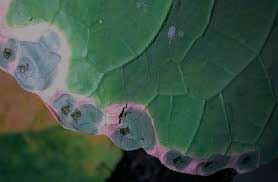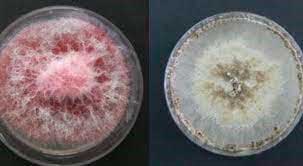Research lines
Home »
Breeding of horticultural Brassicas, with the aim of getting new varieties adapted to the market and global change, with better nutritional and resistance properties.
After several selection programs, we got different varieties of turnip greens (“nabizas”) and turnip tops (“grelos”) with different precocity cycles; varieties of turnip tops, kales (“berzas”) and leaf rape (“nabicol”) enriched in glucosinolates; different precocity cycles of cabbage; varieties of kales, turnip tops and leaf rape enriched in glucosinolates; varieties of cabbage resistant to the lepidoptera Mamestra brassicae; and varieties of turnip tops adapted to different environmental conditions.
Defensive strategies of Brassicas against biotic stressors like the pest Mamestra brassicae, the bacteria Xanthomonas campestris or the fungi Sclerotinia sclerotorium, through the glucosinolates.
In the environment there are many organisms whose interaction with plants can be harmful or beneficial. The last one, live inside plants without cause apparent symptoms. They can act giving nutrients, like defence against biotic or abiotic stressors or producing a wide variety of bioactive chemical compounds of special interest, such as anticancer, antibiotic or insecticides.
Tolerance strategies against abiotic stressors (cold).
Study of the genetic variability against cold, physiological and biochemical changes.
Anticancerogenic effect of degradation products of glucosinolates against breast and prostate cancer, specially by sulforano.
After cell lysis, due to mechanical damage caused by pests and pathogens, or the processing of this food, glucosinolates come into contact with an enzyme that causes the degradation of products such as cyanates, oxazolidines and nitriles. Glucosinolates not only give the bitter taste to these crops, but they also play an important role in human health and defence against insects, nematodes, bacteria, viruses and fungi.
Circadian regulation of secondary metabolites
Plants have an internal clock that regulates the different physiological and biochemical process in relation to light/darkness cycles.
Glucosinolates are defensive compounds that accumulates on seeds and plant tissues depending on the time of the day, preparing its defensive machinery before larvae start feeding.
Study of endophytic fungi and their effect on the development and defence of the plant.
Despite the bad reputation that fungi have as plant pathogens, they can be beneficial, providing nutrients to the plant, defence against biotic or abiotic stressors, or producing a wide range of bioactive biochemical compounds acting as anticancerogenic, antibiotic or insecticides.
Getting healthier Brassica crops, with a greater bioactive compounds content.
Study of the role of secondary metabolites in defence and adaptation to crops.
Transference activities with agri-food sector, related to nutritional quality of kales and turnip tops.
Gene bank
A gene bank is a seed bank, were seeds are kept “ex situ”, in order to preserve the genetic diversity of different wild and improved species or subespecies at low temperature and humidity.
The origin of brassicas gene bank, at Misión Biológica de Galicia, dates back to the 80s, after the prospecting, by Amando Ordás and Juan Baladrón, of local varieties grown in Galicia between 1985 and 1990, with which the gene bank was created.
Since 2000, and with the setup of the actual group, the prospecting was extended to other areas of Galicia and the rest of Spain, recovering traditional varieties of brassicas crops through agricultural extension services, country offices or farmers. The bank´s conservation and regeneration efforts continued currently. Subsequently, the identification of each crop was carried out, creating the current brassicas gene bank, comprising 700 varieties of the genus: 344 of Brassica oleracea, 288 of B. rapa and 62 of B. napus.
This bank contains a unique collection of widely studied and characterized local varieties and has been recognized as an “Active Brassica Collection” at national level by the INIA-CSIC Plant Genetic Resources Center.









